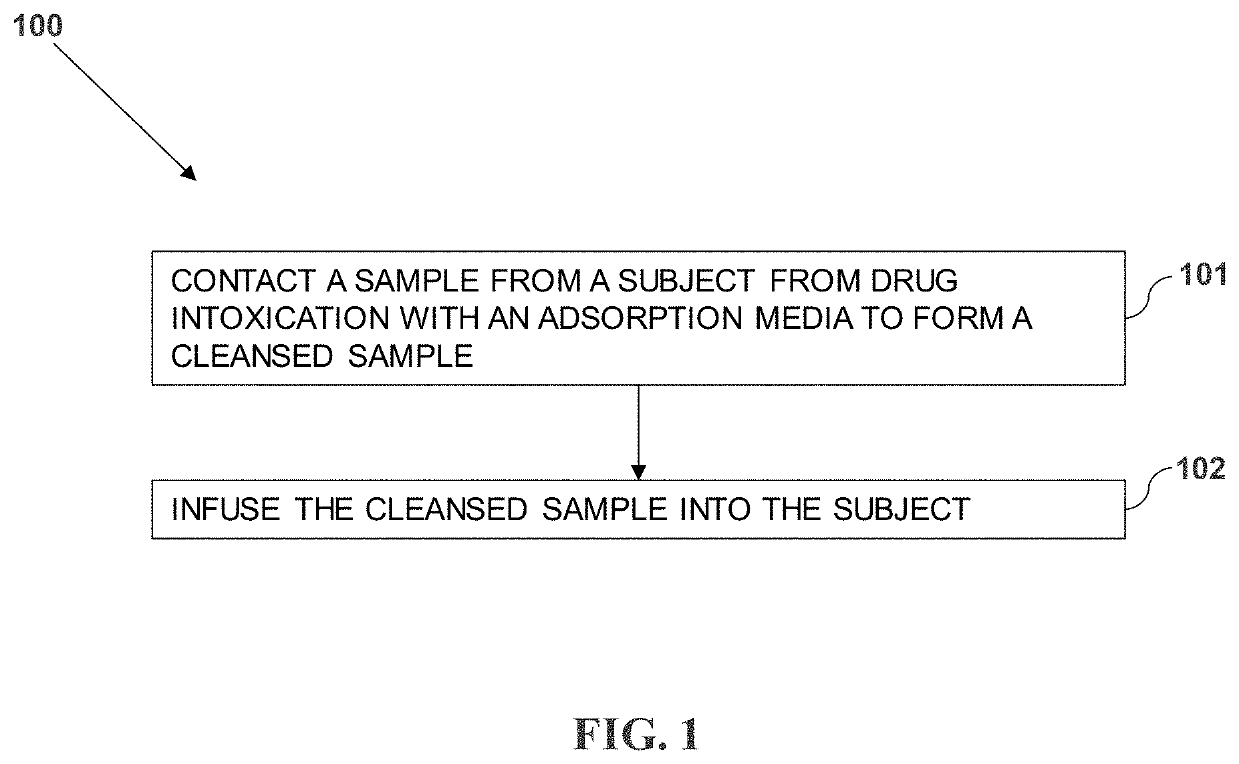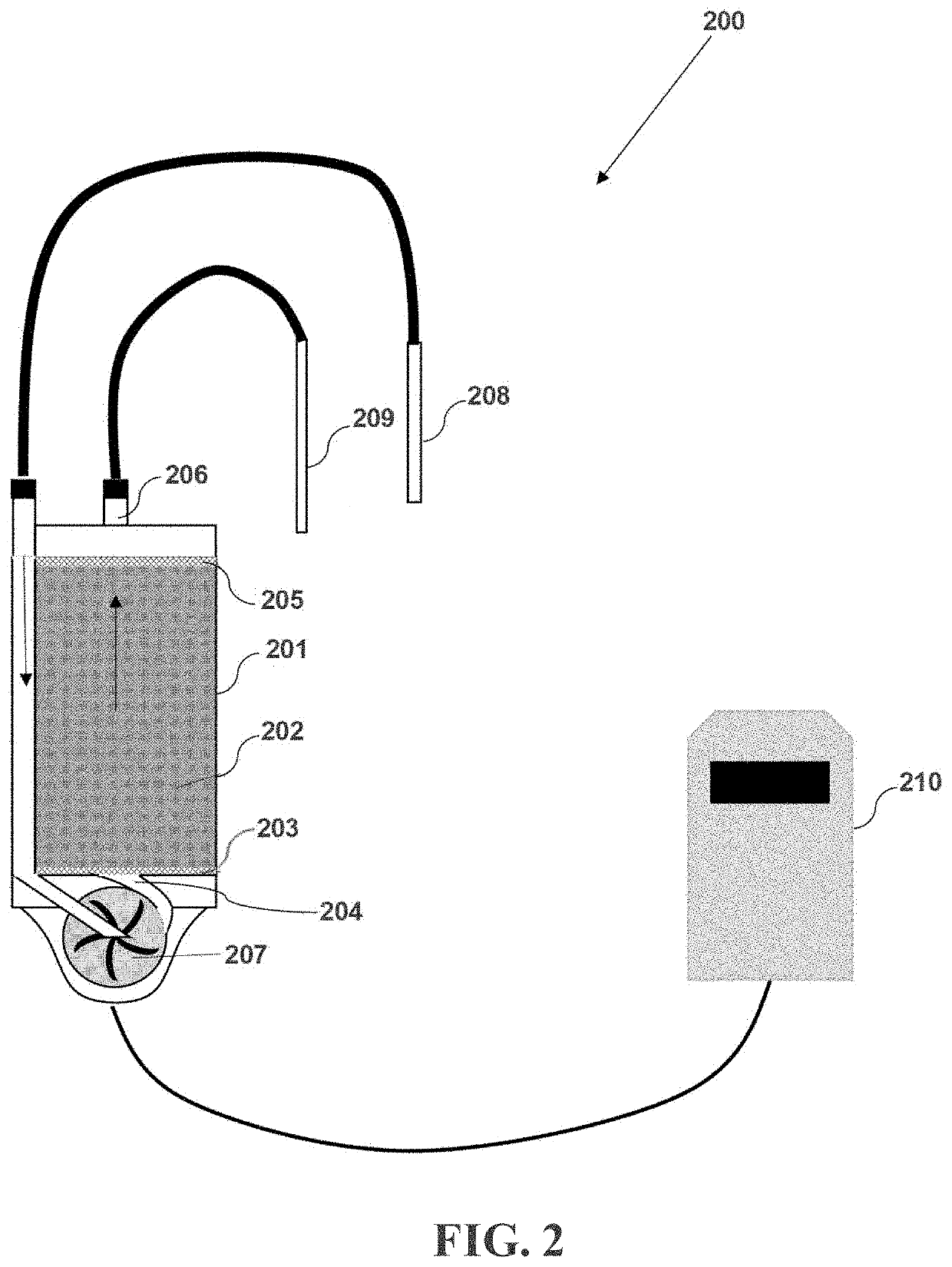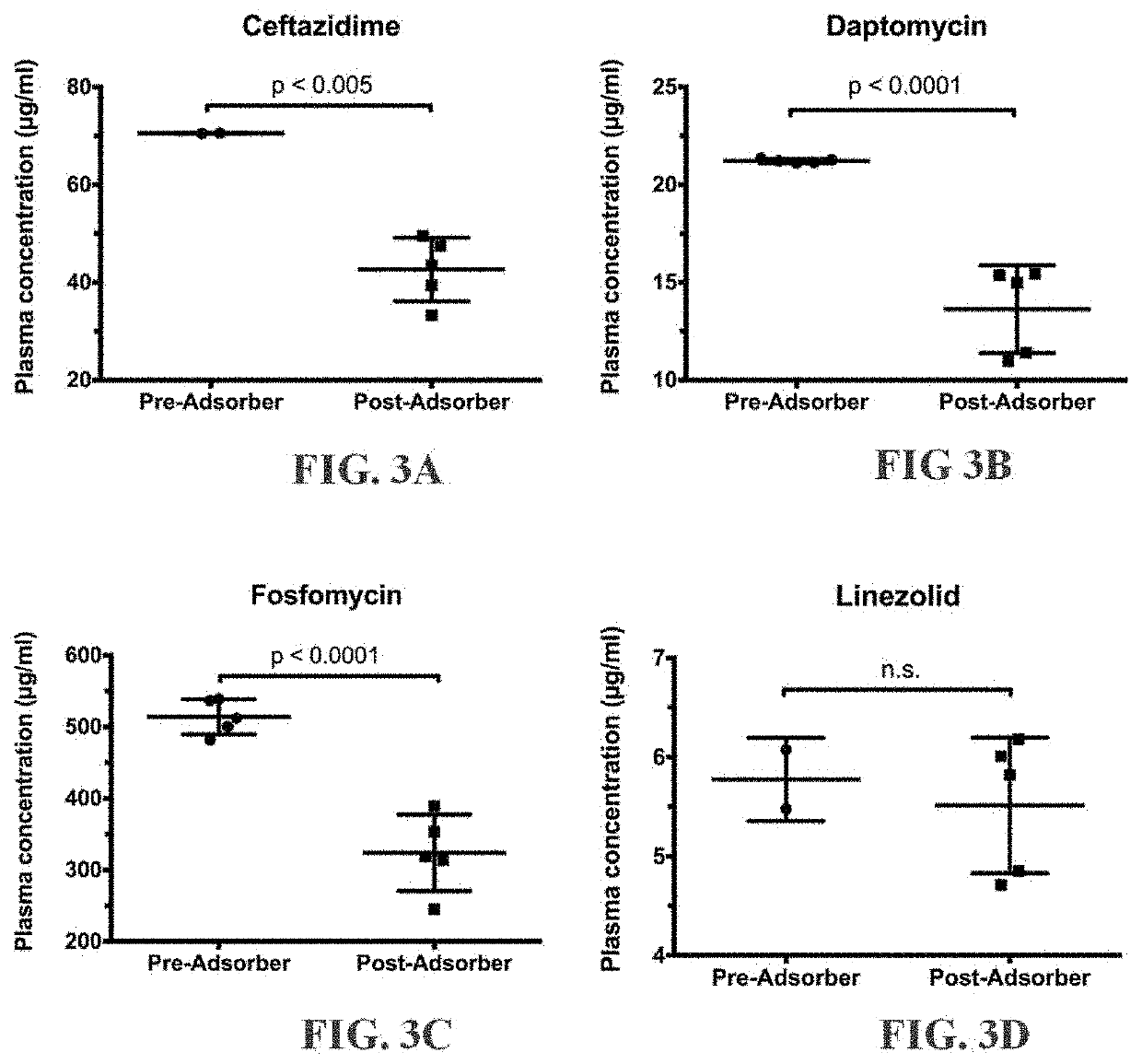Method for treating drug intoxication
a drug and intoxication technology, applied in the field of drug intoxication treatment, can solve the problems of undesired side effects, decontamination therapy options, human and animal mortality and morbidity worldwide, etc., to increase the efficacy of treatment, reduce the concentration of drugs in the now cleansed sample, and increase the safety of treatment
- Summary
- Abstract
- Description
- Claims
- Application Information
AI Technical Summary
Benefits of technology
Problems solved by technology
Method used
Image
Examples
example 1
[0124]Five different antibiotics were tested individually using miniature 1-mL minicartridges that were filled with heparinized media. The five antibiotics included daptomycin, fosfomycin, linezolid, vancomycin and ceftazidime. Each minicartridge was first primed with 2 mL of saline. For each antibiotic a quantity of blood was spiked to a desired therapeutic concentration of antibiotic and mixed for 5 minutes. To determine the initial ‘pre-filtered’ plasma concentration, a small sample was centrifuged for 10 minutes and tested. Subsequently, 2 mL of blood with the antibiotic was passed through the primed minicartridge over 20 second. The ‘filtered’ blood was then collected. The plasma concentration of each antibiotic was then determined after centrifugation of the blood for 10 minutes.
[0125]FIG. 3 presents data from each of the five tests, showing the concentration of drug in the plasma both before and after contacting the samples with the adsorption media. FIG. 3A shows the reducti...
example 2
[0126]Example 2 illustrates treating drug intoxication in a subject without hardware or instrumentation.
[0127]Arterial to venous flow (with optional vasopressors) using blood pressure difference to generate flow through absorbate. Drug intoxication treatment via a single-needle venous line by using a standard blood bag with adsorbent ‘filter’ inserted into the blood tubing. (Vasopressors may be required with hypotension, although slow flow during collection is compensated by and more rapid reinfusion.)
[0128]Once the blood bag fills (≥10 min) it is raised above the patient, flowing back through the standard blood bag with adsorbent ‘filter’ for a second treatment. Since direction of flow does not affect performance, the single unit of blood gets two passes before returning to the patient, affecting a major reduction in the drug or toxin. The process can be repeated several times as needed. Using a low-cost blood bag and needle set eliminates the need for any hardware or instrumentati...
example 3
[0130]Example 3 illustrates a side-by-side blood compatibility test performed on a FDA approved charcoal filter and a test device.
[0131]This example compares performance on filtering blood by two devices, a FDA approved charcoal filter, Gambro Adsorba° Hemoperfusion Cartridge 300 C (“Gambro”), and, Exthera Medical Seraph° 100 Microbind° Affinity Blood Filter (“Seraph”). Seraph is a first-of-its-kind blood filter designed to reduce pathogens from the bloodstream during infections in adjunction to antibiotic treatment. Harmful substances are captured and adsorbed onto the device's proprietary surface. The example performed ex vivo experiments with heparinized human blood to study hemolysis, thrombocytopenia and hypocalcemia of the Seraph device as compared to a predicated hemoperfusion device, Gambro (FIG. 5). In FIG. 5, the 3 devices on the right are the Seraph° devices. The three devices on the left, are the Gambro Adsorba® Hemoperfusion Cartridge 300 C devices.
[0132]Materials as us...
PUM
| Property | Measurement | Unit |
|---|---|---|
| Fraction | aaaaa | aaaaa |
| Fraction | aaaaa | aaaaa |
| Molar density | aaaaa | aaaaa |
Abstract
Description
Claims
Application Information
 Login to View More
Login to View More - R&D
- Intellectual Property
- Life Sciences
- Materials
- Tech Scout
- Unparalleled Data Quality
- Higher Quality Content
- 60% Fewer Hallucinations
Browse by: Latest US Patents, China's latest patents, Technical Efficacy Thesaurus, Application Domain, Technology Topic, Popular Technical Reports.
© 2025 PatSnap. All rights reserved.Legal|Privacy policy|Modern Slavery Act Transparency Statement|Sitemap|About US| Contact US: help@patsnap.com



